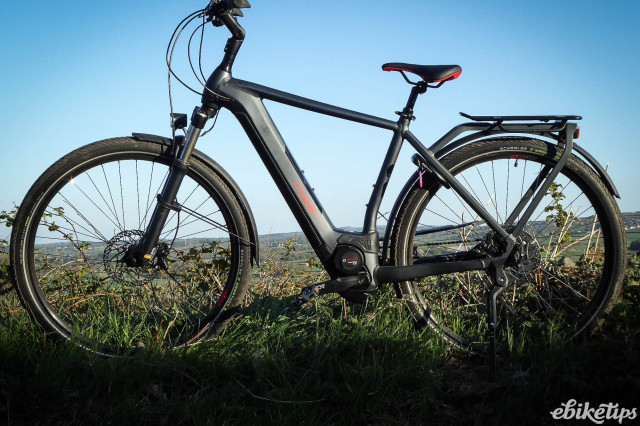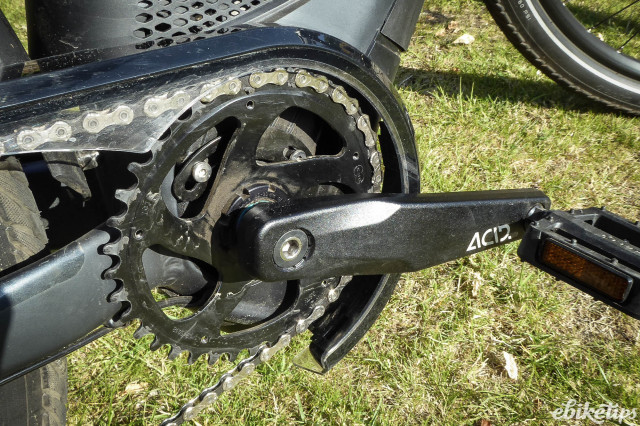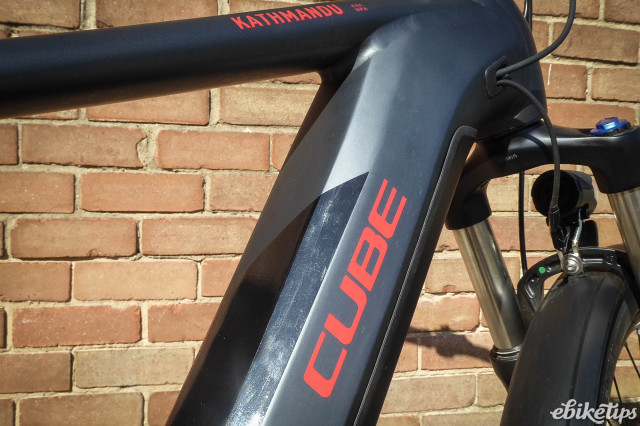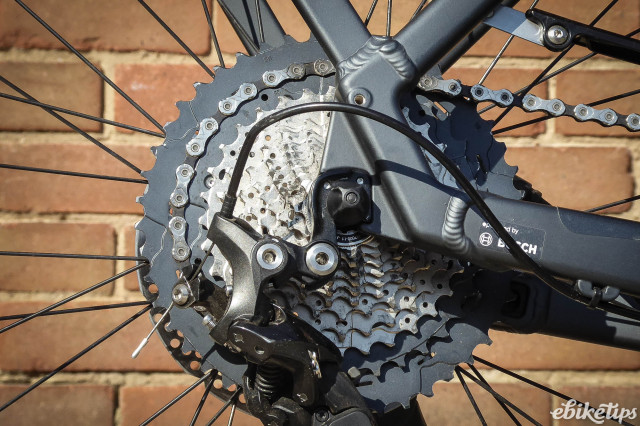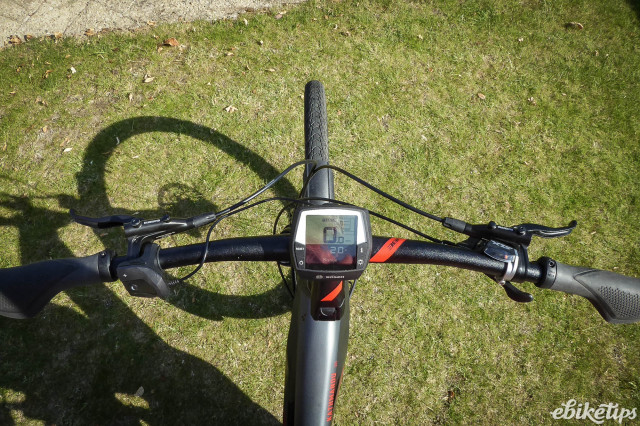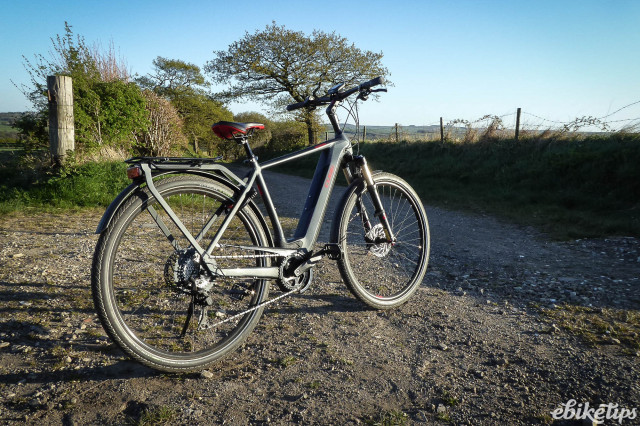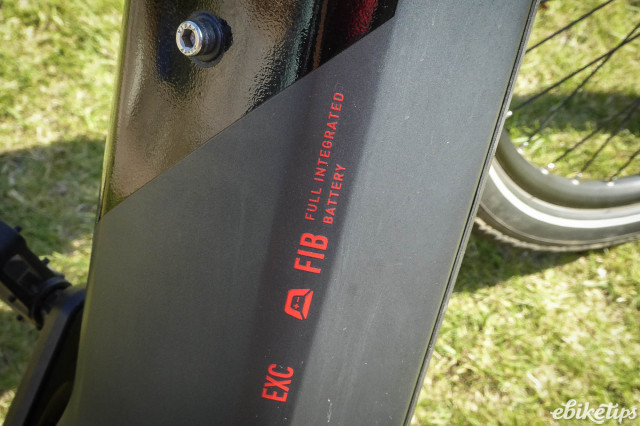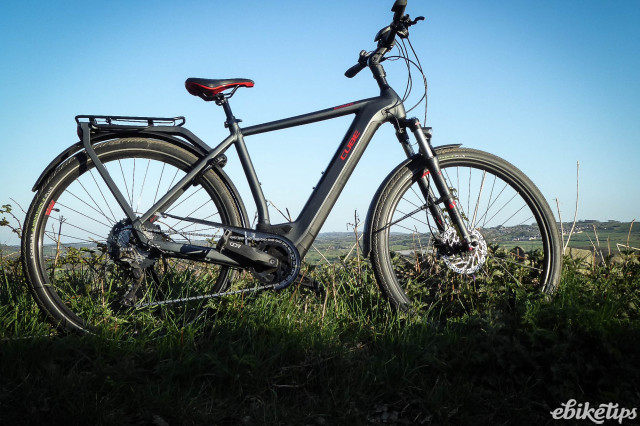Cube Kathmandu Hybrid Exc 625
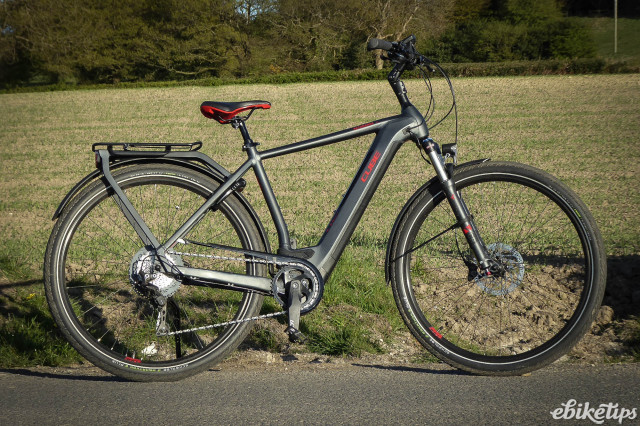
Overview
- Very good value
- Powerful moror
- Solid spec choices with an impressive gearing range
- Shifting was a bit noisy
The Cube Kathmandu Hybrid Exc 625 really is an excellent workhorse of an e-bike, and is specced up to the nines with the latest Bosch Performance Line CX motor, a wide range of gears and sturdy panniers for your luggage. With a heavy focus on the performance-orientated features to give you the most bang for your buck, it's also very good value for money.
Buy the Cube Kathmandu Hybrid Exc 625 here
Cube has a massive range of e-bikes, so before we jump into the detail of the Kathmandu Hybrid Exc 625 it’s worth looking at the Bavarian firm’s potentially confusing e-bike nomenclature system as it applies to this model.
It sits under the broad umbrella of 'Tour' models, the other broad categories being 'Mountainbike, 'Urban', 'Women', 'Road' and 'Kids'. There are four named models under 'Tour': Kathmandu, Touring, Cross and Nature. Along with the Touring range, the Kathmandu sits at the 'comfort' rated end of Cube’s classification. The Kathmandu frame comes in three variants: Mens (with a regular top tube as tested), Trapeze (with a lowered top tube) and Easy Entry with a step-through frame.
The Cross and Nature models are both at the lighter, sportier end of the spectrum. The 'Hybrid' suffix simply applies to all Cube’s e-bikes to easily distinguish them from their non-e-bike counterparts, many of which share similar names.
Like the Touring models, the Kathmandu features a distinctive integral rear pannier rack, welded onto the junction of the seatstays and chainstays that provides a nice large support area for roomy rear panniers. And the comfort aspect is covered via the large volume 28 x 2.15 (55-622) tyres, 100mm of travel in the air suspension fork and a suspension seatpost. All Kathmandu e-bikes have Bosch’s latest, lightest and most powerful crank drive, the Gen 4 Performance Line CX.
By contrast, the Touring Hybrid models are step down in spec (and price), using the Gen 3 Performance motor and a choice of smaller 400 or 500Wh batteries (compared to to the choice of 500Wh and 625Wh batteries for Kathmandu e-bikes). The remaining Cross and Nature model ranges under the Tour umbrella have frames without the integral pannier, and so are really pared down versions of the Kathmandu and Tour models.
So in terms of capability and equipment, the Kathmandu Hybrid Exc 625 sits pretty much at the top of the tree within the Cube’s Tour group of e-bikes; of course, that goes for weight and price too. At just over 28kg on my scales (including a 3.5kg battery) it is some 1.5kg heavier than the weight Cube quote on their website. At £2,999 it sits just below the premium-specced Kathmandu SL range; there are four Kathmandu ‘sub-species’ - One, Pro, Exc and SL - with spec increasing in quality through the range.
Spec
I was particularly keen to try this bike out as it would give me my first extended test period with the latest, top of the line 2020 / Gen 4 Bosch Performance Line CX motor. It is their most powerful ‘standard’ motor (ie excluding cargo and speed pedelec specific models) and claims numerous advantages over the Gen 3 equivalent - 25% less weight (now 2.9kg), an increase from 300% to 340% max assistance, a new gearing system resulting in regular sized chain ring (replacing the previous tiny one) and a new freewheel system with claimed easier pedalling without motor support. This is complemented by Bosch’s largest capacity 625Wh, frame integrated Powertube battery; a mouth-watering prospect.
The bike itself is specced to combine long distance touring ability with comfort. The SR Suntour XCR32 LO-R Air shocks have 100mm of travel, lockout for load riding and the ability to adjust air ‘spring’ preload and rebound; in other words, how easily they squash down and how quickly they come back up. Generally air suspension is a huge step up in comfort and handling compared to cheaper steel springs.
The big volume 28” Schwalbe Marathon E-Plus tyres are also in keeping with the durable tourer image of the bike; as such heavily armoured tyres won’t win any speed or lightness competitions, but have a reputation as one of the toughest, most puncture-resistant tyres out there. I removed one and put in back on as a test; I’ve had some real tussles with Marathon Plus tyres in the past but rather than being hard to snap over the rims these had a tendency to spring off whilst refitting. Still, certainly not the Herculean task I’ve encountered before so I would be happy changing a puncture whilst out riding (in the extremely unlikely event anything did manage to penetrate the Marathon E-Plus’s top rated, multiple-layered, puncture protection).
An angle adjustable stem gives a full 90 degrees of adjustment to accommodate every riding style from sporty to upright.
The drivetrain is mtb inspired, using a 11-46 tooth, 11 speed cassette with a Shimano XT Shadow Plus rear derailleur. This is a good quality derailleur with a large ‘switch’, that stiffens up the derailleur spring tension to stop the chain bouncing around over rougher ground. The rear derailleur is hanger-mounted to help save serious damage to the frame in the event of a knock to the rear derailleur itself.
Moving away from the core of the bike, Cube has specced more basic but perfectly functional items. There is an Intuiva display which I really like, despite the fact it’s decidedly not a bells-and-whistles option compared to more recently introduced displays.
It removes as a handy anti-theft measure and it also features a micro-USB port for charging devices on the go (5V, 500mA). A separate button by your left hand – very easy to use even with thick gloves - lets you toggle through max speed, average speed, trip time, range, odometer, trip distance and clock, as well as letting you toggle through power levels and operate the walk assist.
There is also a battery capacity capacity graphic in 20% increments, speedometer, power level indicator (eco, tour, sport and turbo) and power meter; the latter showing how much power the motor is delivering using in a sliding bar graphic. Buttons on the central display let you turn the powerful Herrmans front and rear LEDS on and off (both are powered from the main e-bike battery), and there is a reset button for the trip stats.
Lots of parts bear Cube’s own branding (or 'Acid' branding which amounts to the same thing), including the cranks, height-adjustable Cube kickstand, bars and the tubeless ready rims. Other practical features include a plastic chainguard, and a novel removable element on the top of the pannier rack.
This all gives the impression that Cube have put the money into the performance aspects of the bike - frame, motor, transmission and forks – and economised to some degree on the peripherals. It seems a sensible approach when this is an e-bike that seeks to deliver the most bang for your buck.
Performance
After a few test rides in varied conditions, including steep Pennine trails and hauling a 50kg trailer weight up some significant gradients , I can say is... wow! The motor pulls just about any weight asked of it up any gradient with ease, where many hub motors and indeed older crank drives might at the very least slow the power delivery a little. On a hot spring day after hauling 50kg of shopping up a very steep hill, I could only feel a little warmth when I put my hand on the side of the motor.
Without the mammoth shopping load and on the trails it’s lively and fun if at first everything feels more rigid and bumpy than I was expecting. Lowering the tyre pressure to 20psi (10 psi below the recommended minimum) and setting the sag correctly in the suspension by letting out a little air transforms the ride over cobbles and down farm tracks to a much smoother experience. The only disappointing aspect as far as comfort went was that I found the suspension seatpost a little too stiff to provide effective cushioning over bigger jolts for my 67kg frame.
Much has been made of the new freewheel on the Gen 4 moto, which should make for easier unassisted pedalling. I certainly noticed the lack of a sudden slowdown in momentum once the max assisted speed is reached, and the combination of software and the new freewheel means an almost seamless transition between powered and unpowered riding.
It’s also true that just turning the motor assist off means you can pedal along fairly easily on the flat at modest speeds, but it’s not a bike I’d want to be cycling up hills or into headwinds without any power, as you might want to with some e-road bikes for example; the significant overall weight of the bike and bomb-proof but high rolling resistance Marathon E-Plus tyres see to that.
The frame-integrated Powertube battery does a great job of distributing its weight along the frame but removal and fitting is a little fiddly compared to the designs that lifts upwards and out of the frame. The main problem was that the front wheel tens to flip round 90 degrees under its own weight which meant the top end of the suspension fork tended to get in the way of easy insertion and removal.
With my 50kg trailer load, I extrapolated range in very hilly country to around 30 miles; this may not sound a lot from such a big battery, but many e-bikes would struggle to pull this load so effectively, especially given that it was on a very sturdily made steel-framed Surly Ted trailer, that itself weighted 13.5kg and was fitted with huge, heavy and (hopefully) impossible to flat Maxxis Hookworm tyres. Without the load and keeping a careful eye on the power level, I could probably ride all day on a fully charged battery.
Recharging is via a pretty small and light (640g) 2A charger and takes around five hours to charge (faster Bosch chargers are available but aren’t cheap).
The 11 derailleur gears shifted without missing a beat, although the changes where sometimes noisy and made a selection of interesting sounds; hardly surprising with all that power going through them. Some mid-drive systems feature ‘gear sensing’ technology that backs off motor power during a gear change, but the Kathmandu doesn’t.
The impressive 413 % gear range with 23 gear inches at the bottom means you should never run out for hills, and equally you have plenty at the top for downhill speeding. The combination of low gear availability and super-powerful motor meant the bike ate up whatever hill was in front of it, and whatever the load I was carrying.
In conclusion, the Kathmandu Hybrid Exc 625 features a well-thought out choice of specs, that delivers powerful and practical performance on a solid workhorse of an e-bike at a great price. And the huge range of e-bikes just within a single product family means if you are not keen on any aspect of this particular model you can get an alternative Tour model to suit you – perhaps a lighter, sportier or cheaper variant or one with a step through frame.
2 comments
My Kathmandu Hybrid had a noisy shift at brand new. I immediately took it to my mechanic who had to tighten the gear cable and take a link out of the chain. Since then, excellent, crisp and quiet.
My wife and I have travelled many thousands of KMs on e-bikes equipped with the previous-gen Bosch mid Mount system. They have both been perfectly reliable.
To avoid clunkiness when changing gear, simply back off the pedaling a bit. The assistance drops and the shift is smoother. It's called 'mechanical sympathy'.
